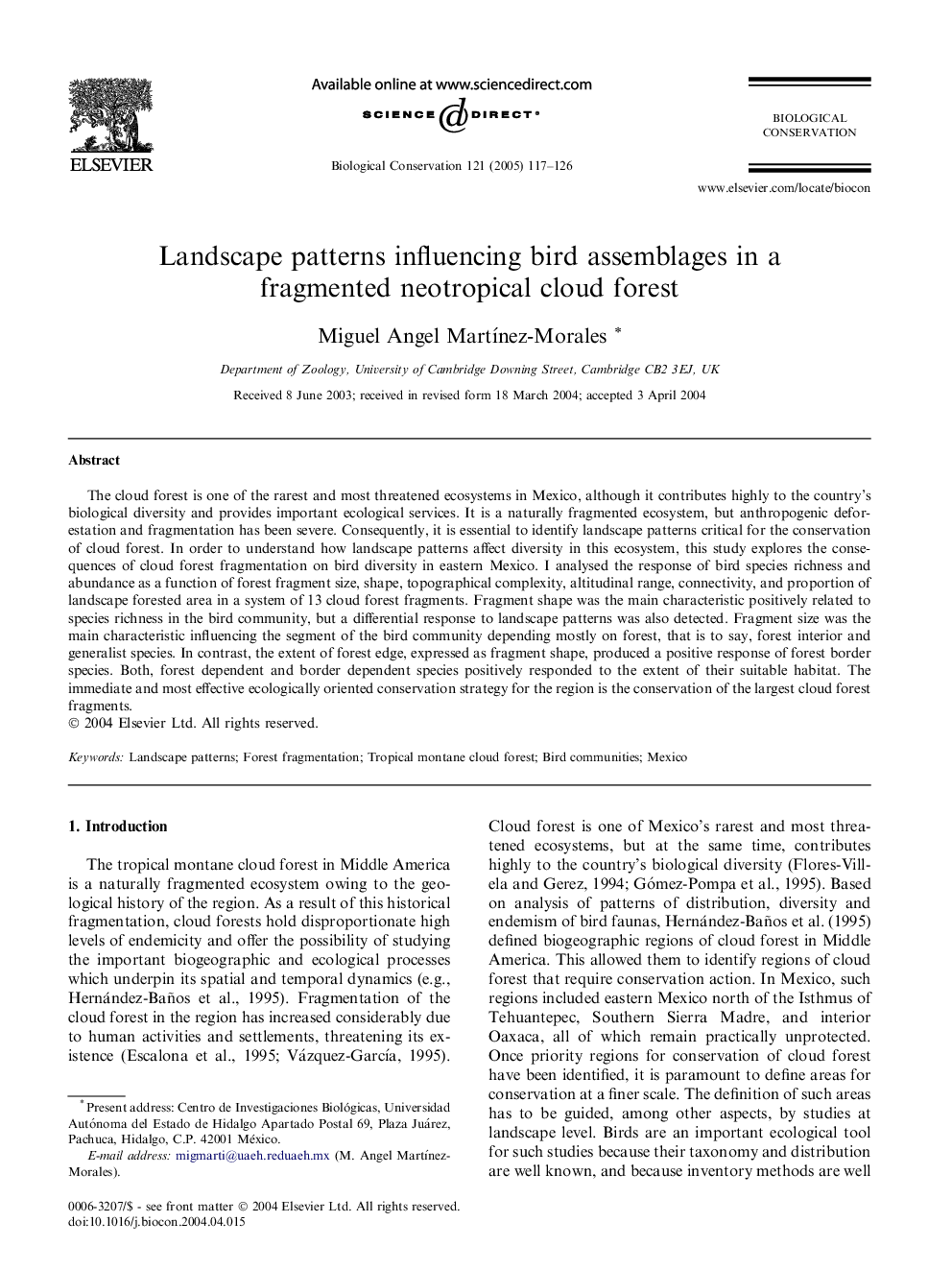| کد مقاله | کد نشریه | سال انتشار | مقاله انگلیسی | نسخه تمام متن |
|---|---|---|---|---|
| 9446124 | 1304649 | 2005 | 10 صفحه PDF | دانلود رایگان |
عنوان انگلیسی مقاله ISI
Landscape patterns influencing bird assemblages in a fragmented neotropical cloud forest
دانلود مقاله + سفارش ترجمه
دانلود مقاله ISI انگلیسی
رایگان برای ایرانیان
کلمات کلیدی
موضوعات مرتبط
علوم زیستی و بیوفناوری
علوم کشاورزی و بیولوژیک
بوم شناسی، تکامل، رفتار و سامانه شناسی
پیش نمایش صفحه اول مقاله

چکیده انگلیسی
The cloud forest is one of the rarest and most threatened ecosystems in Mexico, although it contributes highly to the country's biological diversity and provides important ecological services. It is a naturally fragmented ecosystem, but anthropogenic deforestation and fragmentation has been severe. Consequently, it is essential to identify landscape patterns critical for the conservation of cloud forest. In order to understand how landscape patterns affect diversity in this ecosystem, this study explores the consequences of cloud forest fragmentation on bird diversity in eastern Mexico. I analysed the response of bird species richness and abundance as a function of forest fragment size, shape, topographical complexity, altitudinal range, connectivity, and proportion of landscape forested area in a system of 13 cloud forest fragments. Fragment shape was the main characteristic positively related to species richness in the bird community, but a differential response to landscape patterns was also detected. Fragment size was the main characteristic influencing the segment of the bird community depending mostly on forest, that is to say, forest interior and generalist species. In contrast, the extent of forest edge, expressed as fragment shape, produced a positive response of forest border species. Both, forest dependent and border dependent species positively responded to the extent of their suitable habitat. The immediate and most effective ecologically oriented conservation strategy for the region is the conservation of the largest cloud forest fragments.
ناشر
Database: Elsevier - ScienceDirect (ساینس دایرکت)
Journal: Biological Conservation - Volume 121, Issue 1, January 2005, Pages 117-126
Journal: Biological Conservation - Volume 121, Issue 1, January 2005, Pages 117-126
نویسندگان
Miguel Angel MartıÌnez-Morales,